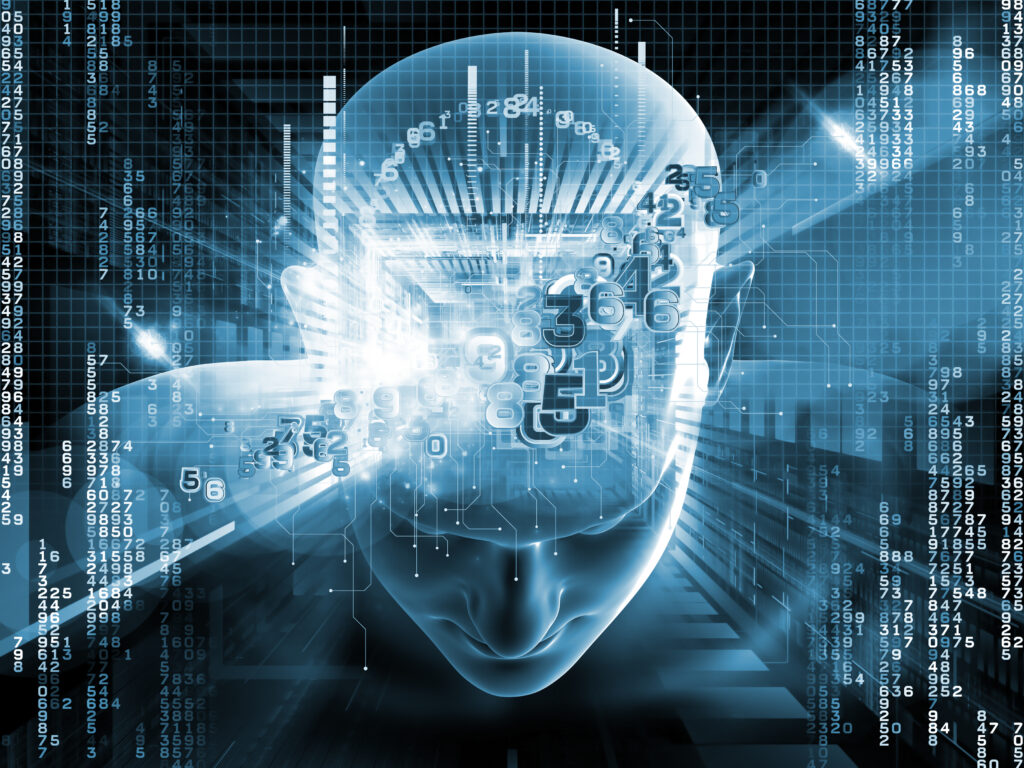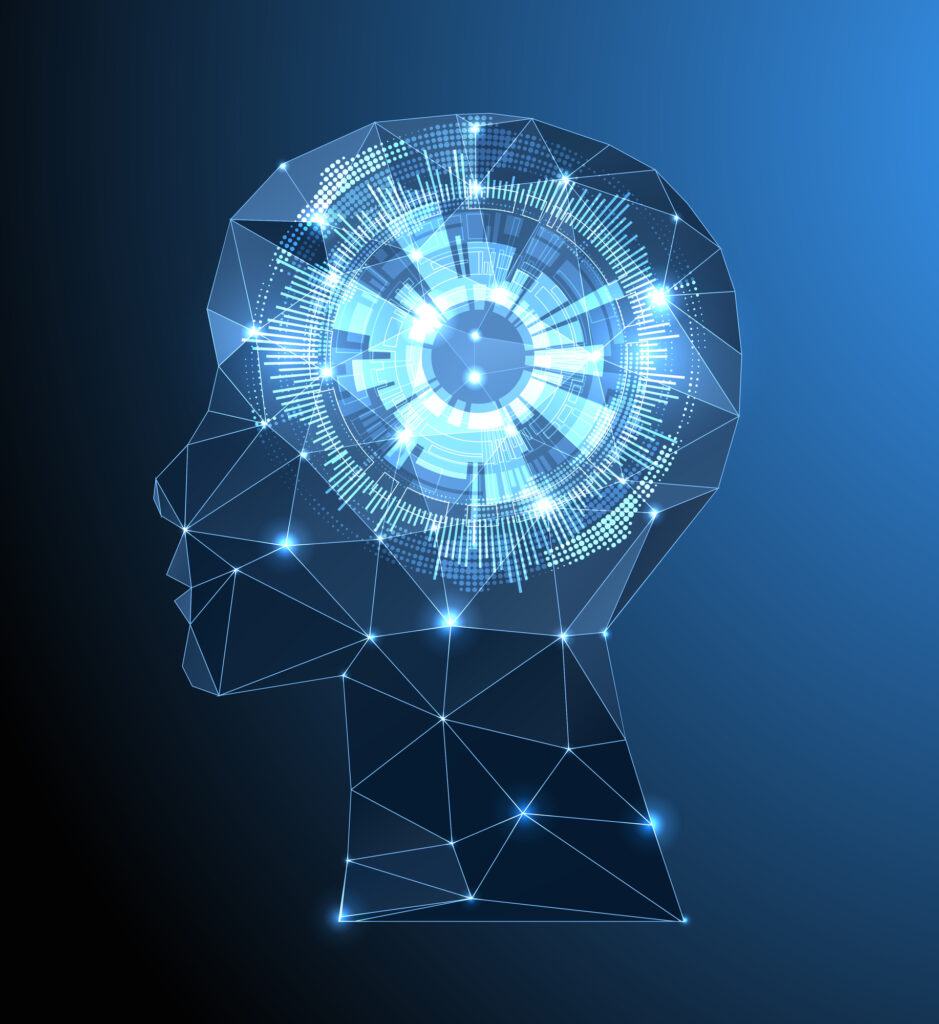A type of artificial intelligence technology, generative AI, can create various kinds of content including images, text, and audio. Synthetic data. The recent buzz about generative AI was driven by new user interfaces that allow users to quickly and easily produce high-quality graphics, videos, and text.
It is important to note that this technology has been around for a long time. In the 1960s, chatbots were introduced. However, until 2014 when (generative adversarial network) was released, generative AI couldn’t create images, video, and audio convincingly resembling real people.
This newfound technology has created opportunities for better dubbing of movies and educational material. However, it also raised concerns over Deepfakes – digitally faked images and videos — as well as harmful cyber attacks against businesses.
Transformers, which track links between words, can also be used to analyze code, proteins, and chemicals.
Large language models, or LLMs, are models that have billions, or trillions, of parameters. They can now be used to create engaging texts, photorealistic pictures, and sitcoms.
This technology can write code, create new products, redesign processes, and change supply chains.
How does generative AI work?

Created from audio or video of someone, creates realistic fakes.
The first versions of generative AI were based on complicated processes and APIs. To develop applications, developers had to learn special languages like Python.
You can customize your generated content by providing feedback on the tone, style, and other aspects you would like to see.
Generative AI models
The models use a combination of AI algorithms that represent and process the content.
After deciding on the way they want to represent reality, developers apply neural networks to create new content. This is done in response to an input or query. Techniques like GANs or variational autoencoders are useful for creating realistic faces for AI training, or for producing synthetic data.
The recent progress made in the field of transformers, such as Google’s Bidirectional encoder representations from Transformers ( BERT), OpenAI’s GPT or Google AlphaFold has led to neural networks which can both encode language and images while also generating new content.
A look at the evolution of generative AI using neural networks
Since the beginning of AI, researchers have created AI tools and systems for programmatically creating content. Earlier approaches were known as rules-based systems and then as “expert systems,” which used explicit rules to generate responses or data.
The first neural networks developed in the 1950s were limited due to a lack of computational power and had small data sets. This was only possible with the introduction of large data sets and improved computer hardware in the late 2000s.
In the last decade, new machine learning techniques, such as generative antagonistic networks and transformers have been developed. These technologies are responsible for recent advances in AI-generated content.
What is Dall-E?
Dall-E, Bard, and ChatGPT are three popular AI interfaces.
Dall E. This multimodal AI app was trained on images with text descriptions.
Microsoft invested heavily in OpenAI after the success of GPT. They also integrated GPT with their Bing search engine.
Google’s stock price dropped after Bard made a rushed launch. The language model said incorrectly that the Webb telescope had been the first to find a planet outside of the solar system.
What use cases are there for AI generative?
Use cases of generative AI are as follows:
- Chatbots to improve customer service, technical support, and sales.
- Deploying deepfakes for mimicking people or even specific individuals.
- Improve the dubbing of movies and educational material in multiple languages.
- How to write emails, profiles for dating, resumes, and term papers.
- Create photorealistic artwork in a specific style.
- Improving product demonstration videos.
- Suggestions for new drugs to be tested.
- Buildings and physical products
- Optimizing new chip designs.
- Writing in a particular style or tonality.
What is the benefit of AI generative?

The following are some of the benefits that can come from implementing generative AI:
- Automation of the manual writing process.
- Reduce the time spent on responding to emails.
- Improve the response time to technical questions
- Create realistic images of people.
- Consolidating complex information in a narrative.
- A simplified method of creating content with a specific style.
What limitations are there to generative AI?
Early implementations of AI generative are limited.
Consider these limitations when using or implementing a generative AI application:
- The source of the content is not always identified.
- Assessing the bias in sources can be difficult.
- The content is more realistic-sounding, making it difficult to detect inaccurate information.
- Understanding how to adjust to new situations can be tricky.
- The results can be distorted by bias and prejudice.
Transformers have a new ability.
Google announced in 2017 that it had developed a new neural network architecture that improved efficiency and accuracy for tasks such as natural language processing. This breakthrough, called Transformers was based on the concept of Attention.
Attention is the mathematics of how objects (words, for example) interact, complement, and modify one another. In their groundbreaking paper “Attention Is All You Need”, the researchers describe the architecture of a neural network that can translate from English to other languages with greater accuracy, and only in a quarter the time of other nets.
Since its introduction, LLMs, like GPT-3, and improved pre-training methods, such as Google BERT, have evolved.
What concerns surround generative AI?

As AI becomes more prevalent, it also raises concerns. Concerns include the impact of AI on business models, the effectiveness of AI, the possibility of abuse and misuse, as well as the overall quality of AI.
- This can give inaccurate or misleading information.
- Without knowing where and how the information came from, it is harder to believe.
- This can encourage new forms of plagiarism, which ignore the rights of artists and content creators.
- This could disrupt business models based on search engine optimization (SEO) and advertising.
- Fake news is easier to spread when is enabled.
- This makes it easy to say that the real photo evidence of an offense was just a fake created by AI.
- The attacker could use a person to carry out a social engineering cyber attack.
Implementing AI generative is more than just technology. Businesses must consider the impact of generative AI on employees and processes.
What examples are there of AI generative tools?
Explore the popular AI generators.
- The text generation tools GPT, Jasper AI-Writer, and Lex.
- The image generation tools Dall-E2, Midjourney, and Stable Diffusion.
- Amper, Dadabots, and MuseNet are all music-generation tools.
- Code-generation tools include CodeStarter GitHub, Tabnine, GitHub, GitHub, and GitHub.
- Tools for voice synthesis include Descript Listnr and Podcast.ai.
- Tool Companies include Synopsys Cadence and Google Nvidia.
Industry use cases of generative AI
Generative AI applications can have a profound impact on different industries.
- To detect fraud, finance can monitor transactions within the context of a person’s past.
- Law firms can utilize generative AI for contract design, evidence analysis, and argument suggestions.
- By combining data from cameras, X-rays, and other metrics manufacturers can identify defects and root causes with greater accuracy and efficiency.
- Media and film companies can make use of generative AI to create content at a lower cost and then translate it into another language using the voices of actors.
- The medical industry could use AI to more effectively identify drug candidates.
- Architects can design prototypes faster using generative AI.
- Game companies can design levels and game content using generative AI.
The GPT is now a part of the family of technologies that are used for general purposes
OpenAI is an AI company that specializes in research and development. It has taken the basic ideas of transformers and developed its version called Generative Pretrained Transformer (GPT). GPT was the acronym for general-purpose technologies like the steam engine and electricity. Many researchers agree that GPT, and other transformer implementations, are living up to the name, as they discover new ways to use them.
Ethical and Biased AI

The new AI tools, despite their promises, open up a whole new can of ethical issues, including bias, plagiarism, hallucination, and accuracy. Microsoft’s 2016 chatbot Tay was turned off when it began expressing inflammatory rhetoric via Twitter.
The latest generation of AI applications sounds more human-like. However, this isn’t the same as intelligence. There is a lot of debate over whether these models can learn to reason. A Google engineer even got fired for publicly declaring that LaMDA, the AI application developed by the company, was intelligent.
You can’t reason why the AI is wrong if you don’t understand how it came up with its conclusions.
Generative AI vs. AI
Generic AI creates new content such as chat replies, designs, or synthetic data. On the other hand, traditional AI has concentrated on making decisions, enhancing analytics, classifying information, and detecting fraud.
As noted, the techniques used in generative AI are often neural network-based, such as GANs, VAEs, and transformers. In contrast, other types of AI use techniques like convolutional networks and recurrent networks. Reinforcement learning is also used.
A user can submit an initial query to generate content. Iterative processes are used to test different content options. AI algorithms that use traditional AI methods process data and return simple results.
Generative AI history
Eliza, a chatbot developed by Joseph Weizenbaum, was among the first examples of generative AI. Initial implementations relied on a rules-based system that could be easily broken due to limited vocabulary and a reliance too much on patterns. Chatbots of this era were difficult to customize and extend.
In 2010, advances in deep learning and neural networks enabled this field to resurgence. The technology was able to learn automatically to classify images, parse text, and transcribe audio.
Ian Goodfellow first introduced GANs to the world in 2014. The deep learning technique offered a new way to organize competing neural networks to produce and rate variations of content. They could create realistic voices, people, and texts. It sparked interest and apprehension about how deep fakes could impersonate people and voices in videos.
The techniques include long-term memories, transforms, diffusions models, and neural radiation fields.
Best practices for using generative AI
These practices can help you achieve the important factors:
- Label all AI-generated content clearly for consumers and users.
- Verify the accuracy of generated content by using primary sources, where appropriate.
- Consider how bias might get woven into generated AI results.
- Use other tools to double-check AI-generated code and content.
- Understand the limitations and strengths of each AI generative tool.
- Familiarize yourself with the common causes of failure and how to work around them.
Future of AI Generative

ChatGPT’s ease and depth have demonstrated tremendous promise in the adoption of generative AI. However, these early implementation problems have inspired researchers to develop better tools that detect AI-generated images, text, and videos. These issues also have led to research on better ways of tracking information provenance. Both industry and society are also developing better tools for tracking the origin of data, which will lead to more reliable AI.
The most important impact on generative AI is when these tools are embedded directly into our existing tools.
Grammar Checkers will get better. Workflows will include more helpful recommendations. Tools for training will automatically recognize best practices from one area of an organization and help others train more efficiently. These are only a few of the many ways that generative AI is going to change the way we work.
AI-generated by a machine will be used in many different business areas.
Generative AI FAQs
Here are some of the most frequently asked questions about AI generative.
Who invented generative AI?
Joseph Weizenbaum, a pioneer of generative AI who created Eliza in 1960 as a chatbot, is credited with creating the first AI.
In 2014, Ian Goodfellow showed a generative adversarial network for creating realistic-looking people and sounding voices.
The recent excitement that led to tools such as ChatGPT and Google Bard is a result of the subsequent research done by Open AI and Google into LLMs.
Could generative AI be used to replace existing jobs?
AI-generated jobs could replace many of the current ones, such as:
- Writing product descriptions.
- Creating marketing copy.
- Generating basic web content.
- Initiating interactive sales outreach.
- Answering customer questions.
- Making graphics to be used on webpages
While some companies may look to replace human workers where they can, others will use AI-generated technology to enhance and augment their current workforce.
What is the best way to build an AI model that generates?
To create a model of generative AI, you need to encode a description of what you are trying to produce. An example would be to start by determining how to characterize similar words that appear in the same sentences or have similar meanings.
This AI model is a powerful tool for representing content in a variety of ways and iterating quickly on variations.
What is the best way to train an AI generative model?
A generative AI model must be tailored to a specific use case. Recent advances in LLMs provide a great starting point to customize applications to different use cases. OpenAI’s popular GPT model, for example, has been used by OpenAI to generate text, code, and imagery from written descriptions.
To train an image-generating application, instead of text, you might use labels to describe the content and style to create new images.
How is generative AI changing creative work?
AI-generated ideas will help workers to explore new possibilities. Designers can explore the variations in a product. Industrialists may explore alternative designs. Architectures could visualize different layouts of buildings and use them as an initial point for refinement.
This could help to democratize certain aspects of creativity. For instance, users in business could use text descriptions for product marketing images. These results could be further refined using simple suggestions or commands.
What is next in generative AI?
The ability of ChatGPT to produce humanlike texts has generated widespread interest in generative AI. This also shed light on many challenges and problems ahead.
Building trust in the results of generative AI will be crucial.
The programming teams will enforce the company’s best practices to write and format more consistent and readable code.
To streamline workflows, vendors will incorporate generative AI into additional tools. Innovation will be driven by the new abilities’ ability to increase productivity.
As part of an augmented analytics workflow, generative AI can also be used to map taxonomies of job descriptions to taxonomies of skills training sites and recruitment sites. Business teams may use the models to label and transform third-party data to perform more complex risk assessment and opportunity analysis.
The future will see generative AI models being extended to include 3D models, product development, drug research, digital twins, and supply chain processes. It will become easier to come up with new ideas for products, experiment with organizational models, and explore different business opportunities.
The latest AI technology defined

AI art (artificial intelligence art)
AI Art is digital art that has been enhanced or created using AI tools.
Auto-GPT
The Auto-GPT agent is a free, open-source AI agent that uses the GPT-4 model to automate tasks to reach a user-defined goal.
Google Search Generative Experience
Google Search Generative Experience is an integrated set of search, interface, and AI capabilities that integrate generative AI results in Google’s search engine queries. Read More
Q-learning
The Q-learning approach is a machine-learning technique that allows a model to learn iteratively and to improve with time.
Google Search Labs (GSE)
The GSE initiative is an Alphabet division’s Google project to test and preview new features for Google Search before making them available publicly.
Which generative models are used for the natural language processing of text?
Some models of natural language processing that include generative models are:
- Carnegie Mellon University’s XLNet
- OpenAI GPT (Generative pre-trained transformer)
- Google’s ALBERT (“A Lite” BERT)
- Google BERT
- Google LaMDA
Can AI become conscious?
AI supporters believe that generative AI can lead to general AI and consciousness. An early LaMDA tester created quite a buzz when he declared the chatbot sentient. He was then fired from Google.
Vernor Verne, an American computer scientist and science fiction author, predicted that we will have the technology to develop superhuman intelligence in the next 30 years. This AI would be more intelligent than us, ending the human age. Ray Kurzweil, an AI pioneer, said that this “singularity,” or “clocking out”, would occur by 2045.
Other AI experts believe it is much farther away. Rodney Brooks, a robot pioneer, predicted in 2048 that AI would not reach the level of sentience as a six-year-old child.
The latest news on generative AI
Organizations are taking AI ethics seriously due to the surge in interest in generative AI. Tech companies like Salesforce have developed ethical guidelines, governance policies, and policies on copyright and misinformation.
Google I/O conference speakers also stressed that responsible AI was important. They released PaLM 2 – a new language in preview – and made improvements to Bard and Search.